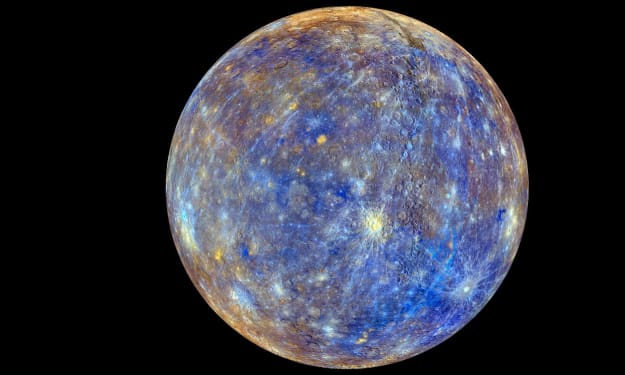The Sun is a massive, luminous ball of gas with a diameter of approximately 1.39 million kilometers (864,938 miles), primarily composed of hydrogen (about 74% of its mass) and helium (about 24% of its mass), with trace amounts of other elements. It is the closest star to Earth and is the center of our solar system. The Sun's energy is produced through a process called nuclear fusion, in which hydrogen atoms combine to form helium, releasing a tremendous amount of energy in the process. The Sun's energy sustains life on Earth, providing light and heat that drive weather patterns, photosynthesis, and other essential processes. The Sun's magnetic field also plays a crucial role in protecting Earth from harmful cosmic radiation.
The Sun's interior is divided into several layers, including the core, radiative zone, and convective zone. The core is the central region where nuclear fusion occurs, while the radiative zone and convective zone are responsible for transporting the energy produced in the core to the Sun's surface. The Sun's surface, or photosphere, has a temperature of about 5,500 degrees Celsius (9,932 degrees Fahrenheit) and is covered in granules, which are small, bright spots caused by convection currents. The Sun's atmosphere, or corona, extends millions of kilometers into space and is visible during a total solar eclipse.
The Sun's magnetic field is also an important aspect of its behavior. The magnetic field is generated by the motion of charged particles in the Sun's interior and plays a crucial role in protecting Earth from harmful cosmic radiation. However, the Sun's magnetic field can also cause solar flares and coronal mass ejections, which can have an impact on Earth's climate and technology.
IMPACT ON EARTH
1. The Sun's energy sustains life on Earth, providing light and heat that drive weather patterns, photosynthesis, and other essential processes.
2. The Sun's energy also plays a crucial role in Earth's climate. Changes in the amount of solar radiation that reaches Earth can cause fluctuations in temperature and weather patterns.
3. The Sun's magnetic field protects Earth from harmful cosmic radiation. However, the Sun's magnetic field can also cause solar flares and coronal mass ejections, which can have an impact on Earth's climate and technology.
4. The Sun's energy can also cause auroras, which are beautiful displays of light in the sky. Auroras occur when charged particles from the Sun's solar wind interact with Earth's magnetic field.
5. The Sun's activity can also have an impact on technology. Solar flares and coronal mass ejections can cause disruptions in satellite communications, power grids, and other systems that rely on technology.
MORDERN SCIENCE
The study of the Sun is an important area of research in modern science. Scientists use a variety of tools and techniques to study the Sun, including telescopes, satellites, and computer simulations.
Solar physics is one of the major areas of research, which focuses on understanding the Sun's behavior and the processes that occur within it. Solar physicists study phenomena such as sunspots, solar flares, and coronal mass ejections, which can have an impact on Earth's climate and technology.
One of the other areas in research is Heliophysics, which is the study of the Sun's interaction with the solar system and beyond. Heliophysicists study the solar wind, which is a stream of charged particles that flows from the Sun and interacts with Earth's magnetic field. They also study the Sun's impact on other planets and the interstellar medium.
ANCIENT HISTORY
The sun is worshiped by many cultures throughout history.
In ancient Egypt, the Sun was worshipped as the god Ra. Ra was seen as the creator of the world and the source of all life. The pharaohs were believed to be the descendants of Ra and were seen as his representatives on Earth.
In ancient Greece, the Sun was known as Helios. Helios was seen as a powerful god who drove the chariot of the Sun across the sky each day. He was also associated with healing and prophecy.
In ancient Rome, the Sun was known as Sol. Sol was seen as a powerful god who brought light and warmth to the world. He was also associated with agriculture and fertility.
In Hinduism, the Sun is personified as Surya. Surya is seen as a powerful god who brings light and life to the world. He is also associated with knowledge and wisdom.
In many Native American cultures, the Sun is seen as a powerful spiritual force. It is often associated with creation, renewal, and healing.
INTRESTING FACTS
The Sun is not actually yellow: Despite what many people may think, the Sun is not actually yellow. When we see the Sun in the sky, it appears yellow or orange due to the Earth's atmosphere. In reality, the Sun is white.
The Sun's magnetic field is incredibly strong: The Sun's magnetic field is about 100 times stronger than Earth's magnetic field. This magnetic field is responsible for many of the Sun's behaviors, including sunspots and solar flares.
The Sun is not solid: The Sun is not a solid object like Earth. Instead, it is a ball of gas, with no solid surface. The Sun's atmosphere gradually becomes less dense as you move away from its core.
The Sun's energy output is not constant: The amount of energy that the Sun emits is not constant. It goes through cycles of activity, with periods of high activity (known as solar maximum) and periods of low activity (known as solar minimum).
The Sun is gradually getting brighter: Over time, the Sun's brightness is gradually increasing. This is due to the gradual accumulation of helium in its core, which causes it to burn hotter and brighter.
WEIRD/UNKNOWN FACTS
The Sun has a sound: While space is often thought of as a silent vacuum, the Sun actually produces a sound. This sound is caused by vibrations in the Sun's atmosphere, which can be detected by instruments on Earth.
The Sun's atmosphere is hotter than its surface: While the Sun's surface has a temperature of about 5,500 degrees Celsius (9,932 degrees Fahrenheit), its atmosphere is much hotter, with temperatures reaching millions of degrees Celsius. This is a mystery that scientists are still trying to solve.
The Sun is not perfectly round: While the Sun may appear perfectly round in the sky, it is actually slightly flattened at the poles and bulging at the equator. This is due to the Sun's rotation, which causes it to spin faster at the equator than at the poles.
The Sun is not the biggest star in the universe: While the Sun is certainly a large and impressive object, it is not the biggest star in the universe. There are many stars that are much larger, including UY Scuti, which is currently the largest known star.
The Sun is gradually losing mass: Over time, the Sun is gradually losing mass as it converts hydrogen into helium through nuclear fusion. This loss of mass is very small, but it is measurable and has been confirmed by observations.
Q. HOW DOES THE SUN BURNS IN SPACE?
The Sun burns in space through a process called nuclear fusion. Nuclear fusion is the process by which atomic nuclei combine to form heavier nuclei, releasing a tremendous amount of energy in the process. Nuclear fusion occurs in its core, where temperatures and pressures are incredibly high. Hydrogen atoms combine to form helium, releasing energy in the form of light and heat. This process is sustained by the immense gravitational pressure of the Sun, which keeps the hydrogen atoms compressed and hot enough to undergo fusion.
The energy produced by nuclear fusion in the Sun's core is transported to its surface through a process called convection. Hot gas rises from the core, carrying energy with it, while cooler gas sinks back down to the core. This creates a cycle of rising and falling gas that helps to transport the Sun's energy to its surface.
QUESTIONS WITHOUT ANSWERS
1. Why is the Sun's corona so hot? The Sun's corona, or outer atmosphere, is much hotter than its surface, which is a mystery that scientists are still trying to solve. Some theories suggest that the corona is heated by magnetic fields, while others propose that it is heated by waves or other processes.
2. What causes the Sun's magnetic field to flip? The Sun's magnetic field undergoes a complete flip every 11 years, with the north and south magnetic poles switching places. The exact cause of this phenomenon is not well understood, although it is thought to be related to the Sun's internal dynamics.
3. What is the nature of the Sun's dark spots? Sunspots are areas of the Sun's surface that appear darker than their surroundings. While scientists understand the basic mechanisms that cause sunspots, there are still many unanswered questions about their nature and behavior.
4. What is the Sun's exact age? While scientists have a good understanding of the Sun's age, there is still some uncertainty about its exact age. Estimates range from about 4.6 billion years to 4.9 billion years.
The Sun is a dynamic and ever-changing object, with occasional sunspots, solar flares, and other phenomena occurring on its surface. The study of the Sun is an important area of research for scientists, as it provides insights into the behavior of stars and the workings of the universe.
About the Creator
Captain Kidd
I am thrilled to invite you to an extraordinary adventure. A journey through the vast and mysterious realm of outer space, promises to be both educational and awe-inspiring, as we explore the wonders of the cosmos together.
Enjoyed the story? Support the Creator.
Subscribe for free to receive all their stories in your feed. You could also pledge your support or give them a one-off tip, letting them know you appreciate their work.







Comments
There are no comments for this story
Be the first to respond and start the conversation.